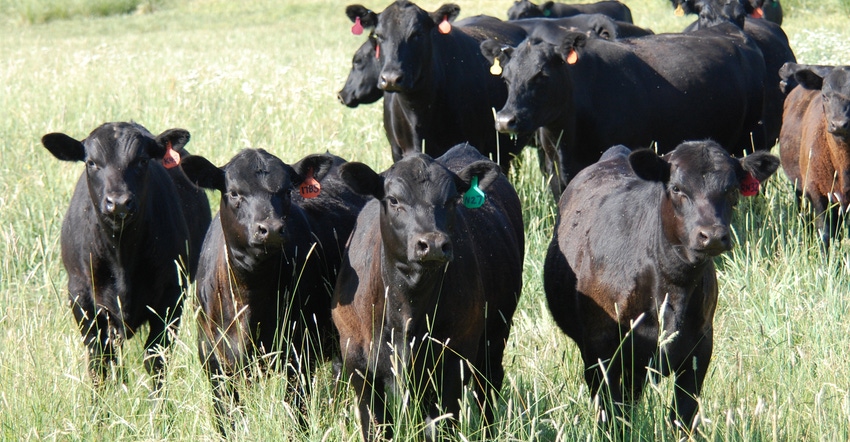December 2, 2019

Disappointing cattle prices loom like storm clouds. A third of producers are losing money, while others get by with modest returns and worry about those thunderheads.
There are silver linings, of course.
CattleFax analyst Duane Lenz told the 2019 Angus Convention crowd there could be another year or two under the cloud. But then, he’s optimistic, bullish even, for future beef prices. Consumer beef demand for high-quality beef is stronger than it’s ever been.
That’s especially important because growing supplies will need growing demand, projected at an extra pound of beef per person next year. More beef in grocery carts means opportunity for cattlemen raising the right kind of cattle, he says.
“Meat buyers won’t mess with Select anymore,” Lenz said. “Their customers don’t want it.”
The widening Choice/Select spread reflects that. A six-year average through 2018 was $8 to $9 per cwt, but 2019 looks to finish near a record $24 Choice advantage.
“And that’s not even CAB (Certified Angus Beef brand), just commodity Choice, in these days when the line between high Select and low Choice is blurred,” he said. For those with premium Angus cattle, the CAB/Choice spread at $10 per cwt supports additional premiums.
The combination of discounts for Select with premiums for upper Choice and Prime send a steady signal to keep moving genetics and management toward better beef. Angus producers responded to allow CAB brand Prime sales to grow by more than 35% in 2019. Heavy supplies of pork and poultry compete with Select, but not as effectively with premium beef, Lenz noted.
Exports favor highly marbled beef, and this year is on track to be the second-best ever for meat sales overseas. African swine fever in China creates pull-through demand for U.S. beef to the countries supplying that shortfall in protein.
The rate at which other countries are supplying China’s meat isn’t sustainable, Lenz said, noting China may open a wider door to U.S. imports next year.
The forecast fed-cattle high next year should be $125 per cwt in the spring, but if a deal is made with China, Lenz expects that to be $130 per cwt.
The low next summer could be $95 per cwt, but that’s the commodity base.
“You put all those premiums on top of one another and Prime is worth hundreds of dollars more than Select,” Lenz noted.
Rainy-day chores to ensure future market premiums could include analyzing herd data and poring over sire data to find the best matches. Producers might even consider moving their calving dates to hit a better seasonal market.
The U.S. beef cow herd seems to have reached a stable size of 29 to 32 million head, currently recovered to the pre-drought level of 10 years ago, Lenz said. Minor liquidation is expected over the next couple of years before the fed-cattle harvest reaches a cyclical high in 2021.
But each year between now and then will still have its opportunities, its silver linings. Thinking about selling your 2019 calves outright?
“Cool your jets,” Lenz said. They’ll have more value with added pounds, so he suggested a “look at retaining ownership, especially for Angus producers that are producing quality beef that will grade Choice or better.”
Again, it’s consumer demand to the rescue. The economy is generally good enough to let people spend their money on higher priced, premium protein options. But not just any beef — they want quality.
Clouds may be dark and growing, but Lenz said brighter days lie ahead for cattlemen who produce a higher quality product. The sun is nearly peeking out.
“I hope I’m not being too optimistic, but demand is just so good,” he said.
Source: Certified Angus Beef, which is solely responsible for the information provided and is wholly owned by the source. Informa Business Media and all its subsidiaries are not responsible for any of the content contained in this information asset.
You May Also Like




